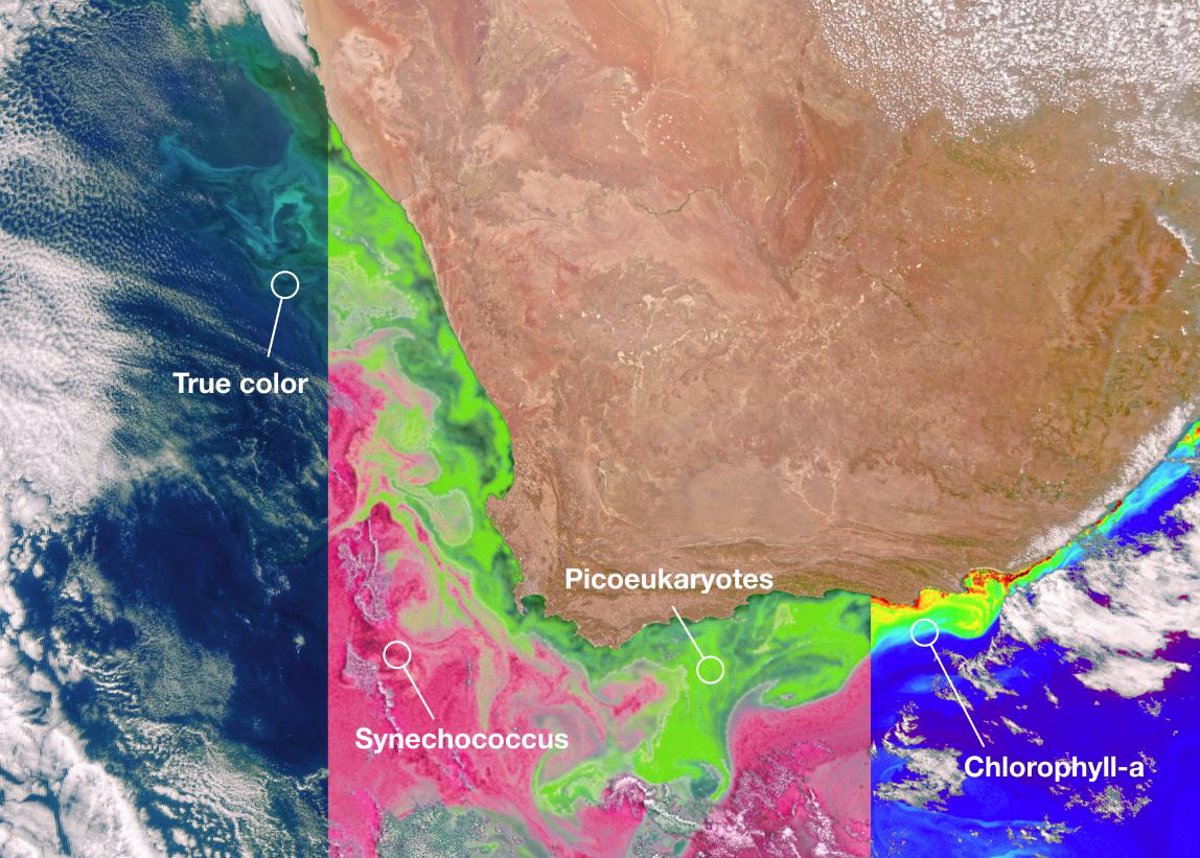Madrid, 12 Apr. (Europe Press) –
Published by NASA First image from orbit of the OCI (Ocean Color Instrument) instrument on the PACE satelliteThis allows phytoplankton communities to be differentiated for the first time.
This first image released by OCI identifies Two distinct communities of these microscopic marine organisms On October 28, 2024 in the sea off the coast of South Africa. In the center panel of this image, Synechococcus is in pink and phycokaryotes are in green. The left panel of the image shows the natural color scene of the ocean and the right panel shows the concentration of chlorophyll-a, a photosynthetic pigment.
NASA is already publicly distributing science-quality data from its new Earth observation satellite, providing first-of-its-kind measurements of ocean health, air quality and the effects of a changing climate. said in a statement.
The Plankton, Aerosol, Cloud, and Ocean Ecosystem (PACE) satellite was launched on February 8, and underwent several weeks of in-orbit testing of the spacecraft and instruments to ensure proper operation and data quality.
PACE data will allow researchers to study microscopic life in the ocean and particles in the air, improving our understanding of issues such as fisheries health, harmful algal blooms, air pollution and smog, and wildfires. With PACE, scientists can also study how the ocean and atmosphere interact with each other and affected by climate change.
While previous ocean color satellites could detect only a few wavelengths, PACE detects more than 200 wavelengths. With this extensive spectral range, scientists can identify specific phytoplankton communities. Different organisms play different roles in the ecosystem and carbon cycle (most are harmless, but some are harmful to human health), Therefore, distinguishing phytoplankton communities is a major task of the satellite.
In addition, PACE's two multi-angle polarimeters, HARP2 and SPEXone, measure polarized light reflected from clouds and small particles in the atmosphere. These particles are called aerosols. They can range from dust to smoke to sea foam and more.
With their data, scientists can measure cloud properties important to understanding climate, and monitor, analyze, and identify atmospheric aerosols to better inform the public about air quality. Scientists can also learn how aerosols interact with clouds and affect their formation. This is necessary to create accurate climate models.

